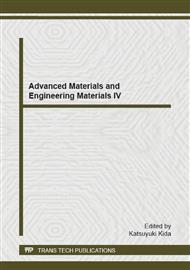p.327
p.332
p.336
p.340
p.344
p.351
p.359
p.365
p.371
Heat Dissipation Simulation Analysis of High Power LED via Heat Slug Geometry Variation
Abstract:
High power LEDs are currently being plagued by heat dissipation challenges due to its high power density thus limiting its further potential development and fulfillment. Exercising proper selection of packaging component could improve the life time of high power LED. In this work, the significance of the heat slug geometry on the heat dissipation of high power LED was addressed through simulation analysis. The heat slug geometries were varied in order to compare the heat dissipation of the high power LED. Ansys version 11 was utilized for the simulation. The heat dissipation of the high power LED was evaluated in terms of junction temperature, von Mises stress and thermal resistance. The key results of the analysis showed that a superior surface area is preferred for an enhanced heat dissipation of high power LED
Info:
Periodical:
Pages:
344-347
Citation:
Online since:
December 2014
Price:
Сopyright:
© 2015 Trans Tech Publications Ltd. All Rights Reserved
Share:
Citation:


